Some of the most famous paintings of history + Update
 •
by
•
by ¤Anon.7904407¤
In the next article I will introduce you to Iranian most famous painters and their works.

most famous painting in the world is the main attraction of the Louvre museum in Paris, where it is seen by six million people every year! Leonardo da Vinci painted it from the year 1503 or 1504 till shortly before he died in 1519

The Scream – Edvard Munch. The most famous piece by Edvard Munch, painted around 1893. It was painted using oil and pastel on cardboard. This frightening painting is on display at The National Gallery, Oslo, Norway

The most famous painting by Picasso, completed in 1937. The painting was painted in Paris and is Inspired by the bombing of Guernica in Spain during the Spanish Civil War. The painting is on permanent display in Museo Reina Sofía, Madrid, Spain
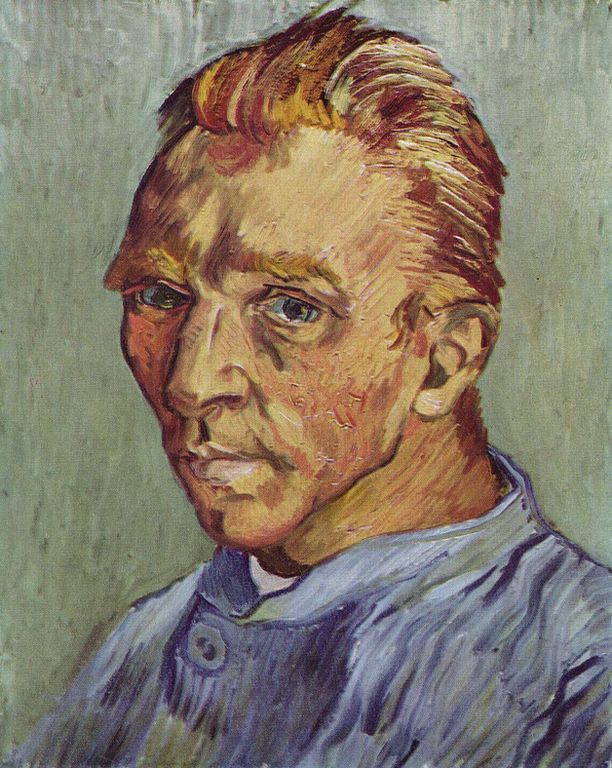
Self-Portrait Without Beard – Vincent van Gogh. Even though Van Gogh painted many portraits of himself, this one is by far the most famous as it is his last self-portrait and one of the few that depicts him without a beard. It was given by him to his mother as a birthday gift. It is also one of the most expensive paintings of all times, as it was sold for $71.5 million in 1998, and is now part of a private collection

Girl with a Pearl Earring is an oil painting by 17th-century Dutch painter Johannes Vermeer. It is a tronie of a girl with a headscarf and a pearl earring. The painting has been in the collection of the Mauritshuis in The Hague since 1902.

Arrangement in Grey and Black No.1, best known under its colloquial name Whistler's Mother, is a painting in oils on canvas created by the American-born painter James McNeill Whistler in 1871. The painting is 56.81 by 63.94 inches (144.3 cm × 162.4 cm), displayed in a frame of Whistler's own design. It is exhibited in and held by the Musée d'Orsay in Paris, having been bought by the French state in 1891. It is one of the most famous works by an American artist outside the United States. It has been variously described as an American icon and a Victorian Mona Lisa.

Café Terrace at Night, also known as The Cafe Terrace on the Place du Forum, is a coloured oil painting executed by the Dutch artist Vincent van Gogh on an industrially primed canvas of size 25 (Toile de 25 figure) in Arles, France, mid-September 1888. The painting is not signed, but described and mentioned by the artist in three letters. There is also a large pen drawing of the composition which originates from the artist's estate.
Visitors of the site can still stand at the northeastern corner of the Place du Forum, where the artist set up his easel. He looked south towards the artificially lit terrace of the popular coffee house, as well as into the enforced darkness of the rue du Palais leading up to the building structure (to the left, not pictured) and, beyond this structure, the tower of a former church (now Musée Lapidaire). Towards the right, Van Gogh indicated a lighted shop as well, and some branches of the trees surrounding the place—but he omitted the remainders of the Roman monuments just beside this little shop.
The painting is currently at the Kröller-Müller Museum in Otterlo, Netherlands.
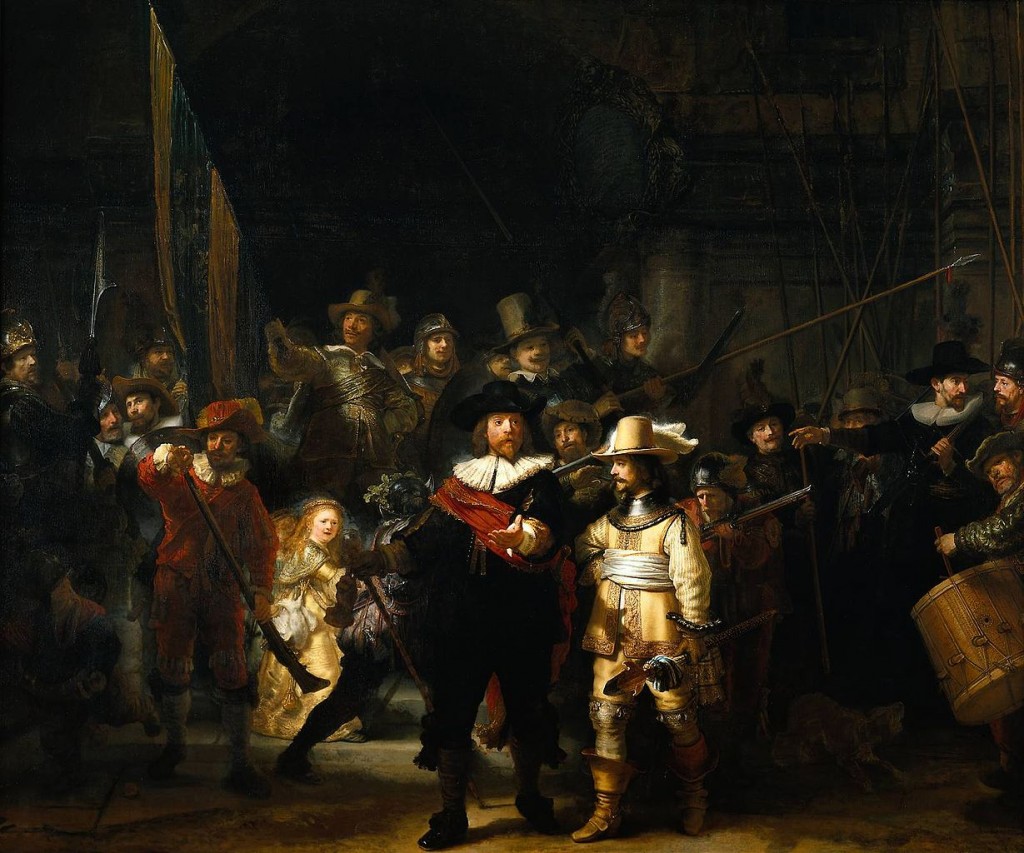
The Night Watch – Rembrandt van Rijn. Completed in 1642, this famous artwork is on display at the Rijksmuseum in Amsterdam. The painting depicts a city guard moving out, led by Captain Frans Banning Cocq, his lieutenant and the rest of the guard’s armed men
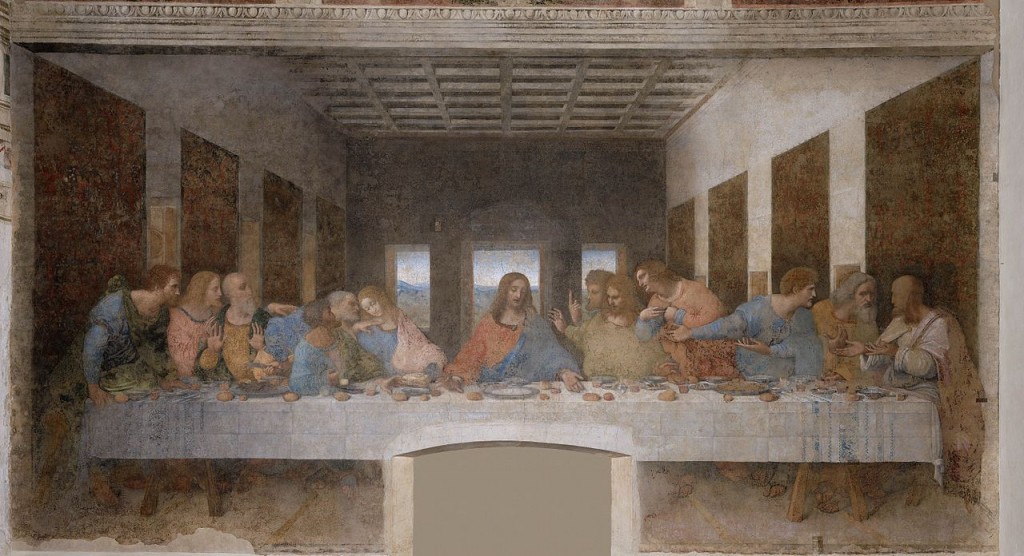
The Last Supper – Leonardo da Vinci. This world famous painting is not shown in a museum, but rather covers the back wall of the dining hall at Santa Maria delle Grazie monastery in Milan, Italy. It was painted by the most famous artist of all time, Leonardo da Vinci in the late 15th-century. The painting depicts the scene of The Last Supper of Jesus with his disciples. Seeing this masterpiece in the small monastery is truly one of the best attractions Milan has to offer
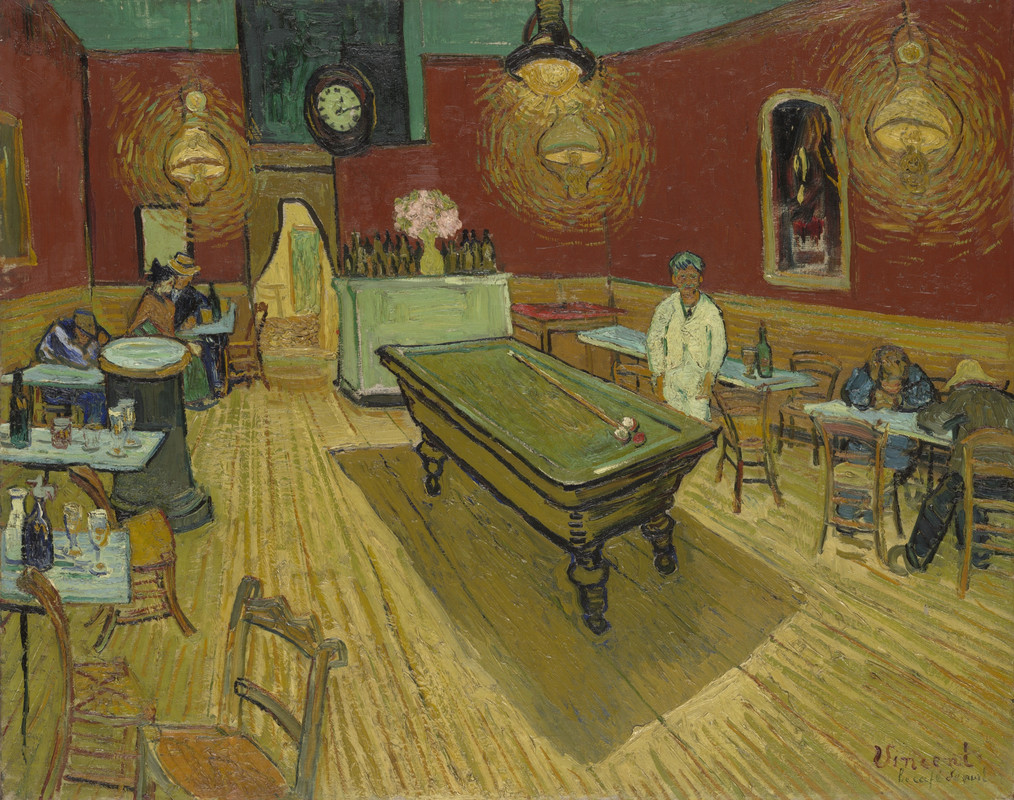
The Night Café (French: Le Café de nuit) is an oil painting created by Dutch artist Vincent van Gogh in September 1888 in Arles.[1] Its title is inscribed lower right beneath the signature.
The interior depicted is the Café de la Gare, 30 Place Lamartine, run by Joseph-Michel Ginoux and his wife Marie, who in November 1888 posed for Van Gogh's and Gauguin's Arlésienne; a bit later, Joseph Ginoux evidently posed for both artists, too.

Dogs Playing Poker refers collectively to a series of sixteen oil paintings by C. M. Coolidge, commissioned in 1903 by Brown & Bigelow to advertise cigars.[1] All the paintings in the series feature anthropomorphized dogs, but the nine in which dogs are seated around a card table have become well known in the United States as examples of mainly working-class taste in home decoration. Critic Annette Ferrara has described Dogs Playing Poker as "indelibly burned into ... the American collective-schlock subconscious ... through incessant reproduction on all manner of pop ephemera."
And these tow works suggested to be added by dear MetalJawS

Napoleon Crossing the Alps (also known as Napoleon at the Saint-Bernard Pass or Bonaparte Crossing the Alps) is the title given to the five versions of an oil on canvas equestrian portrait of Napoleon Bonaparte painted by the French artist Jacques-Louis David between 1801 and 1805. Initially commissioned by the King of Spain, the composition shows a strongly idealized view of the real crossing that Napoleon and his army made across the Alps through the Great St. Bernard Pass in May 1800.
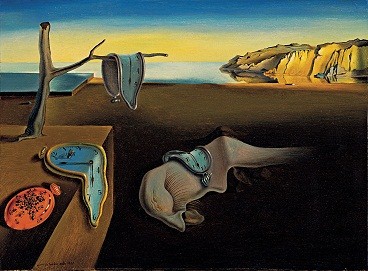
The Persistence of Memory (Spanish: La persistencia de la memoria; Catalan: La persistència de la memòria) is a 1931 painting by artist Salvador Dalí, and is one of his most recognizable works.
First shown at the Julien Levy Gallery in 1932, since 1934 the painting has been in the collection of the Museum of Modern Art (MoMA) in New York City, which received it from an anonymous donor. It is widely recognized and frequently referenced in popular culture, and sometimes referred to by more descriptive (though incorrect) titles, such as 'The Soft Watches' or 'The Melting Watches'.
Sources:
Wikipedia.com
10mosttoday.com


Comments
Some of the most famous paintings of history
https://www.erepublik.com/en/article/some-of-the-most-famous-paintings-of-history-2580780/1/20
وت
Great job
Voted
Thanks
Just love Van Gogh!
Good work 🙂
Good job buddy. And I would like to add another two:
"Napoleon crossing the alp", by Jacques Louis David
and the second one is somehow a gesture of modern art and philosophy, "The persistence of memory", by Salvador Dali.
O/
Thanks
o7
V
https://www.erepublik.com/en/article/some-of-the-most-famous-paintings-of-history-update-2580780/1/20
خدایی الکی دارم ارب بازی میکنم وگرنه من هم میتونم چند تا نقاشی مثل اون
کافه شبانه رو بکشم
تو هر کاری بخوای می تونی انجام بدی
V
V
Great Article!
And yes "The Scream – Edvard Munch." from my home Country! 🙂
vored
Nice
07
for The Night is Dark and full of Terror
Nice theme for an article 🙂
o/
o7
v
voted